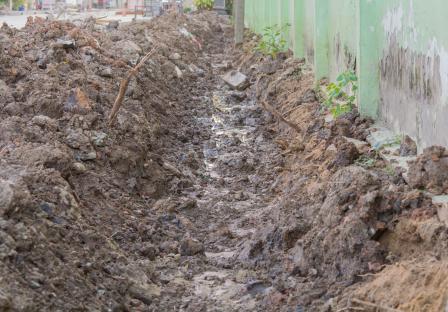Miscellaneous Inorganic Wastes: Material-Specific Data
The category of miscellaneous inorganic wastes in municipal solid waste (MSW) in this analysis includes soil, bits of concrete, and stones. For a complete list of other inorganic materials covered in this report, please see our A to Z directory.
This web page is a brief summary of data specific to miscellaneous inorganic materials not covered in our other material-specific web pages. For more comprehensive information, see the 2018 Data Tables on the Advancing Sustainable Materials Management: Facts and Figures Report page.
Overview
 EPA measures the generation, recycling, composting, combustion with energy recovery and landfilling of miscellaneous inorganic wastes in MSW.
EPA measures the generation, recycling, composting, combustion with energy recovery and landfilling of miscellaneous inorganic wastes in MSW.
EPA found that miscellaneous inorganic wastes make up a relatively small portion of MSW. The Agency gathers data for this analysis from sampling studies. The category is not well-defined and often shows up in sampling reports in categories such as “fines” or “other.” This category generated an estimated four 4.1 million tons of MSW in 2018, which was 1.4 percent of total MSW generation. The Agency could not identify information on the recovery (recycling or otherwise) of these materials.
The total amount of miscellaneous inorganic wastes in MSW combusted in 2018 was 800,000 tons. This represented 2.3 percent of all MSW combusted with energy recovery that year.
In 2018, landfills received about 3.3 million tons of miscellaneous inorganic wastes, which comprised 2.3 percent of all MSW landfilled.
Please see the EPA Methodology Document for further information on estimating the generation and management of miscellaneous inorganic wastes.
Summary Table and Graph
The data below are from 1960 to 2018, relating to the total number of tons of miscellaneous inorganic wastes generated, recycled, composted, combusted with energy recovery and landfilled.
| Management Pathway | 1960 | 1970 | 1980 | 1990 | 2000 | 2005 | 2010 | 2015 | 2017 | 2018 |
|---|---|---|---|---|---|---|---|---|---|---|
| Generation | 1,300 | 1,780 | 2,250 | 2,900 | 3,500 | 3,690 | 3,840 | 3,990 | 4,040 | 4,070 |
| Recycled | - | - | - | - | - | - | - | - | - | - |
| Composted | - | - | - | - | - | - | - | - | - | - |
| Combustion with Energy Recovery | - | 10 | 50 | 490 | 680 | 670 | 680 | 780 | 790 | 800 |
| Landfilled | 1,300 | 1,770 | 2,200 | 2,410 | 2,820 | 3,020 | 3,160 | 3,210 | 3,250 | 3,270 |
A dash in the table means that data is not available.
